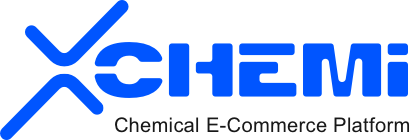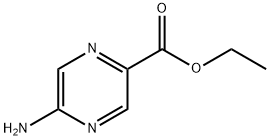A man with advanced liver cancer was treated with Yttrium 90. His liver function gradually returned to normal after just one injection. How true is this? Can all liver cancer patients use it?
Can Yttrium-90 Therapy Be a Game-Changer for All Advanced Liver Cancer Patients?
Related Products More >
-
- 10025-94-2
- equest For Quotation
- 99.9kg
-
- 10025-94-2
- equest For Quotation
- 1ton
-
- 9068-38-6
- equest For Quotation
- 25kg/Drum
-
- 9012-90-2
- equest For Quotation
- 25kg drum
-
- 9007-49-2
- equest For Quotation
- 1kg/bag;25kg/Cardboard Drum
-
- 9007-49-2
- equest For Quotation
- 100g
-
- 9007-49-2
- equest For Quotation
- kg
-
- 7440-65-5
- equest For Quotation
- BAG



 沪ICP备2021018848号-5
沪ICP备2021018848号-5

The man, treated at Guangzhou University of Chinese Medicine Jinshanzhou Hospital, faced numerous challenges. His cancer's location and the extent of liver cirrhosis made traditional surgical options and conventional interventional procedures infeasible. However, a glimmer of hope emerged with the introduction of Yttrium-90 therapy, a cutting-edge treatment modality that has shown promising results in targeting and destroying cancerous tissues.
Yttrium-90, a radioactive isotope, is encapsulated within microspheres that can be precisely delivered to the tumor site. Once in position, these microspheres emit high-energy beta radiation, which effectively kills cancer cells while sparing the surrounding healthy tissues. This targeted approach not only minimizes side effects but also enhances the therapy's efficacy.
Chemically speaking, the Yttrium-90 microspheres are designed to be biocompatible and stable within the body, allowing for prolonged retention at the tumor site. The decay of Yttrium-90 releases beta particles, which have a short range of action, ensuring that the radiation is concentrated on the cancerous cells. This precise delivery mechanism is a testament to the advancements in biochemistry and nuclear medicine that have made such targeted therapies possible.
Biologically, cancer cells are characterized by uncontrolled growth and division, which often leads to mutations in genes that regulate normal cell function. Yttrium-90 therapy capitalizes on this by delivering a high dose of radiation directly to the site of the tumor, causing DNA damage and triggering apoptosis, or programmed cell death, in the cancerous cells.
The success of this therapy in the aforementioned case is not isolated. Clinical trials and real-world data have demonstrated the efficacy of Yttrium-90 therapy in treating various types of liver cancer, including hepatocellular carcinoma and intrahepatic cholangiocarcinoma. However, its accessibility has long been a concern, primarily due to the high cost associated with the import of Yttrium-90 microspheres.
Fortunately, recent advancements in technology have led to the domestic production of Yttrium-90 microspheres in China, significantly reducing the cost of treatment. This breakthrough has made Yttrium-90 therapy more accessible to a broader patient population, potentially transforming the landscape of liver cancer treatment.
But can this therapy be universally applied to all liver cancer patients? The answer lies in a comprehensive evaluation of each patient's condition, including the stage and location of the cancer, overall health, and response to previous treatments. While Yttrium-90 therapy has shown remarkable results in many cases, it is not a one-size-fits-all solution.
As we continue to explore the potential of Yttrium-90 therapy and other targeted treatments, we must also consider the ethical and economic implications of making these therapies more accessible. How can we ensure that all patients, regardless of their socioeconomic status, have access to the latest advancements in cancer treatment?
Let us engage in a thoughtful discussion on this topic. How do you think we can balance the need for innovation with the imperative of affordability in healthcare? What role do you believe governments, pharmaceutical companies, and healthcare providers should play in making cutting-edge treatments like Yttrium-90 therapy accessible to all?
Effects on individual patients
Patients with advanced liver cancer may see significant improvement in liver function after receiving Y-90 therapy. In some cases, if the tumor is well located and the patient's body responds well to treatment, a single injection of Y-90 microspheres can effectively kill tumor cells and relieve the pressure caused by the tumor on liver tissue and bile ducts, thereby improving liver function. But this is only the case for a small number of patients, and the specific effect varies from person to person.
Applicability of Y-90 Therapy
Not suitable for all patients: Y-90 therapy has strict indications and contraindications, and it is not suitable for all liver cancer patients.
Patient selection criteria: Eligible patients usually include those with unresectable liver cancer, no extrahepatic metastasis, and good liver function reserve. For example, patients with liver function scores of Child-Pugh class A or B are more likely to be suitable candidates. In addition, patients should not have severe portal vein thrombosis that could affect blood flow to the liver, or active infections, bleeding tendencies, and other conditions that could increase the risk of treatment.
Tumor-related factors: The size, location, and vascular supply of the tumor also affect the suitability of Y-90 therapy. Tumors with a rich blood supply that can be effectively embolized by Y-90 microspheres are more likely to have a good response. If the tumor is too large, too diffuse, or has invaded important blood vessels and bile ducts, the effectiveness of treatment may be limited and there may be a higher risk of complications.
What do you think?